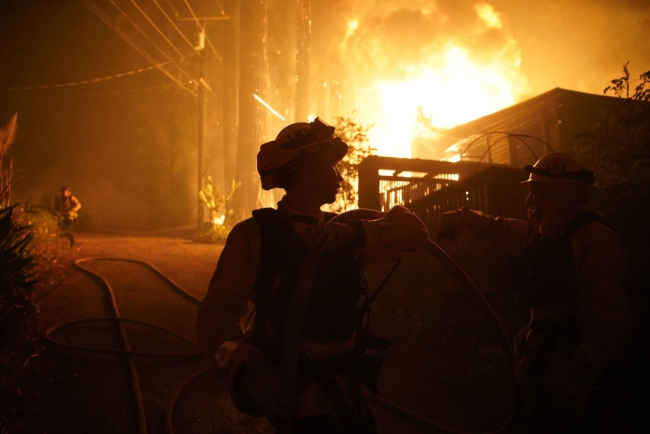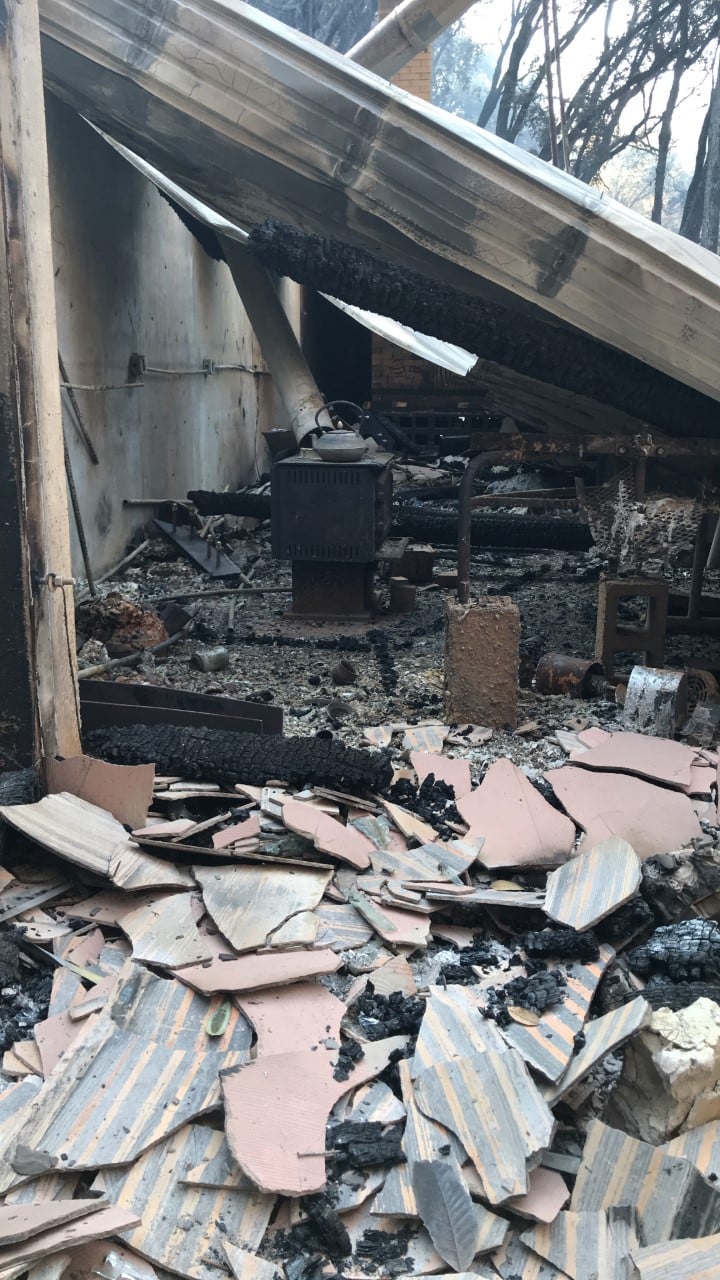You have /5 articles left.
Sign up for a free account or log in.

Firefighters work to protect homes surrounding residences engulfed in flames on Madrone Avenue at the corner of Virginia Avenue before 2 a.m. in Boulder Creek, Calif., on Friday, Aug. 22, 2020.
MediaNews Group/The Mercury News via Getty Images
The CZU Lightning Complex fire has raged in the Santa Cruz and San Mateo Counties of eastern California for two weeks, displacing more than 75,000 people and spreading thick smoke across nearby cities.
Cabrillo College, a small community college in Aptos, Calif., is watching the fire closely. As of Sunday, the fire was 35 percent contained, and it appeared that the Cabrillo campus would likely be spared from any damage. But many of the students and employees who live in the mountains nearby have been displaced, have lost their homes or have otherwise suffered as a result of the fire.
Cabrillo had planned for a hybrid instruction model this fall. A majority of courses will be held online, and a handful will still be conducted on campus. The college delayed the start of the fall term until today, a week later than originally planned. Matthew Wetstein, president and superintendent at Cabrillo, worried students, faculty and staff members might still be dealing with fallout from the fires throughout the start of the semester.
“We’re going to have people who aren’t going to be able to get back to their home for weeks, if not a month,” Wetstein said. “The roads are impassable, power lines are down and the water delivery system has been impacted.”
The community college was already preparing for a difficult fall semester amid the COVID-19 pandemic, but the nearby fires have made carrying on with instruction even more challenging.
As of Sunday, more than 1,000 structures in the area had been destroyed, and Wetstein assumed that at least a handful of those structures belonged to students or employees. Wetstein is still gathering information about how many students have been impacted by the fires and in what ways, but based on initial data he estimates that between 300 and 500 students will have lost their homes in the fire. The college typically enrolls around 11,000 students each semester.
Five Cabrillo employees and one trustee lost their homes in the fire. Sam Clarkson is one of the employees who lost a home. He teaches pottery at Cabrillo and lives in the mountains near Aptos.
“Home and studio and a probably six-digits ceramics collection -- it’s all gone,” he said.

Clarkson and his wife are currently staying at a hotel in Aptos. In the past 10 years, they have been evacuated due to fires three times.
“This isn’t our first rodeo, but this is the first time we’ve lost anything in the fire,” he said.
Clarkson will not teach at Cabrillo this fall. "I’m happy my classes were underenrolled," he said.
Even with the loss of his home and studio, Clarkson found a silver lining.
“One of my major obstacles in my life was all of this stuff that I’d accumulated, and how to live with it and breathe and make space,” he said. “So, like I tell my friends, it’s devastating and liberating at the same time.”
Cabrillo sent a survey to students to see how they were doing and learn more about what they needed from the college. They borrowed the idea from Santa Rosa Junior College in Sonoma, Calif., which sent a similar survey to students during the Tubbs fire in 2017.
So far, more than 900 students have responded. About a third said they’d been evacuated because of the fire. A third also reported some kind of medical issues, primarily mental health concerns like trauma and post-traumatic stress disorder, Wetstein said.
More than 100 students still needed books, calculators and other basic school supplies. In response, the college is working to set up an emergency grant aid fund.
While Cabrillo’s campus has so far been unaffected by the fire, the county’s emergency services requested Cabrillo provide shelter for displaced residents. Employees rallied to set up an evacuation site -- Cabrillo’s parking lot is available for people to park cars and trailers, and the gym is filled with cots for people to sleep. Wetstein said that Jon Salisbury, facilities director at Cabrillo, executed an evacuation center plan within two hours and that staff members were distributing food and water before the Red Cross arrived the next day.
Clarkson worries about a potential COVID-19 outbreak in town. Previously, Santa Cruz County had one of the lowest case counts in California.
“We’re going to have a big COVID breakout because people are living in parking lots and trailers and sharing outhouses,” he said. “We just anti-social distanced everybody in the mountains, and everybody in the mountains were the ones that had no problems social distancing."




